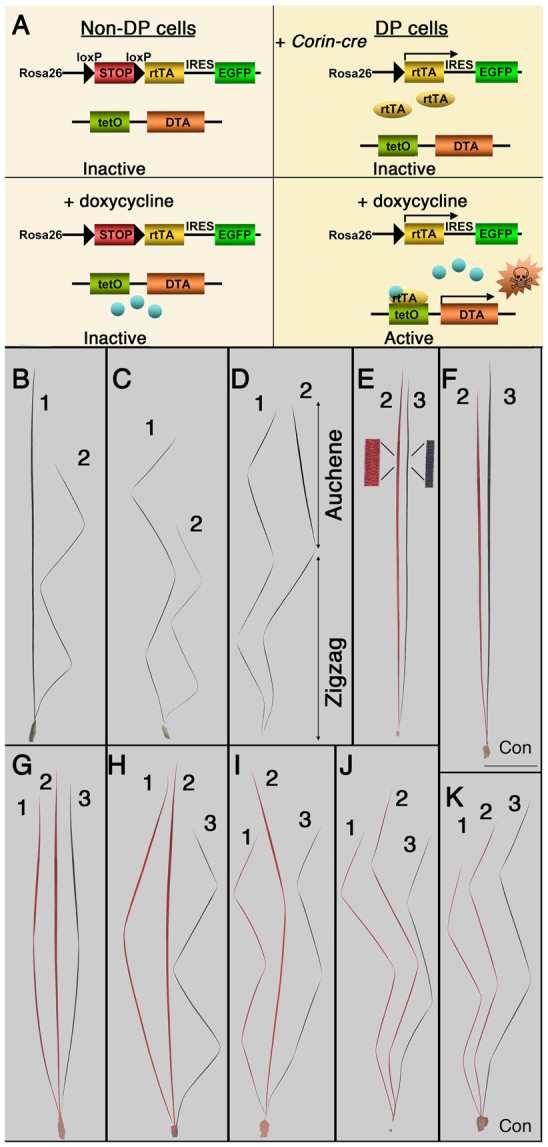Fig. 4.

A fixed period of DP damage alters hair morphology. (A) Schematic of the DPtetOn system. All cells in DPtetOn mice start with inactive r26rtTA and tetO-DTA alleles. Corin-cre expresses cre-recombinase in DP cells, which removes the stop sequence from r26rtTA and leads to the production of the reverse tet transactivator protein (rtTA) and EGFP. rtTA is inactive until bound by doxycycline. In the presence of doxycycline it binds to the tetO sequence and initiates transcription of the DTA transgene. DTA kills the cell. (B-K) Dissected follicles from DPtetOn mice treated with doxycycline during the anagen phase (P30-56, B-D), second telogen phase (P42-63, E,G-J) or control (F,K). The hair cycle in which the hair was generated is indicated (1, 2, 3). For animals treated in telogen and control, the first two hairs were dyed red at 9 weeks, prior to formation of the third hair (black). (B,C) Treatment during anagen results in either a shift to production of a smaller hair type (B, awl to zigzag) or production of a smaller hair of the same class (C, zigzag to smaller zigzag). (D) Example of a chimeric hair produced with treatment during anagen. The distal half of the second hair has the morphology of an auchene, whereas the proximal region has the morphology of a zigzag. In follicles that produced awl hairs in the second hair cycle, DP deletion during the second telogen phase causes production of smaller hairs or hair types during third anagen. (E) This follicle produced a normal awl in the second cycle and a smaller awl after DP cell ablation. A small segment is magnified for comparison of thickness and structure. (F) A control awl follicle produces a slightly larger hair in the third cycle. Scale bar: 1 mm. (G,H) A follicle that produced a normal auchene hair in the first cycle (1), an awl hair in the second (2) and made an auchene (G) or reduced zigzag hair (H) in the third cycle after DP cell depletion (3). (I) Follicles that produced zigzag hairs in the first cycle and auchenes in the second produce zigzag hairs after DP cell deletion during second telogen. (J) In contrast to follicles producing larger hair types, the follicles that produced zigzag hairs in the second hair cycle and re-entered the third cycle produce a zigzag hair that is only slightly smaller than its second cycle counterpart. (K) Control follicle that produced zigzag hairs of increasing size in all three cycles.
